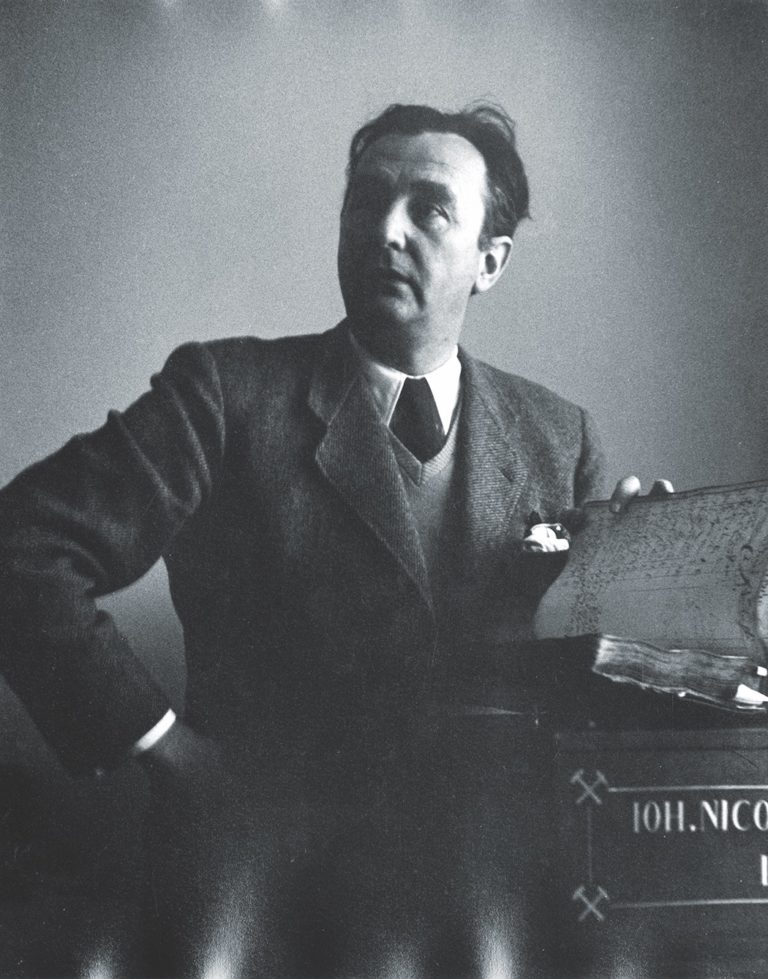More languages
More actions
(Created page) Tag: Visual edit |
No edit summary Tag: Visual edit |
||
| Line 1: | Line 1: | ||
{{Infobox person|name=Ulrich Ernst Kurt, Baron von Gienanth|native_name=Ulrich Ernst Kurt, Freiherr von Gienanth|image=Ulrich-von-Gienanth 1954.jpg|caption=Gienanth in [[Eisenberg, Thuringia|Eisenberg]], [[Free State of Thuringia|Thuringia]], [[German Democratic Republic (1949–1990)|East Germany]], 1954. Photo by [[Robert Mottar]] (1919–1967).|birth_date=6 June 1901|birth_place=[[Berlin]], [[Kingdom of Prussia (1701–1918)|Kingdom of Prussia]], [[German Empire (1871–1918)|Germany]]|death_date=10 December 1996 (aged 95)|death_place=Eisenberg, Thuringia, [[Federal Republic of Germany|Germany]]|nationality=German}} | {{Infobox person|name=Ulrich Ernst Kurt, Baron von Gienanth|native_name=Ulrich Ernst Kurt, Freiherr von Gienanth|image=Ulrich-von-Gienanth 1954.jpg|caption=Gienanth in [[Eisenberg, Thuringia|Eisenberg]], [[Free State of Thuringia|Thuringia]], [[German Democratic Republic (1949–1990)|East Germany]], 1954. Photo by [[Robert Mottar]] (1919–1967).|birth_date=6 June 1901|birth_place=[[Berlin]], [[Kingdom of Prussia (1701–1918)|Kingdom of Prussia]], [[German Empire (1871–1918)|Germany]]|death_date=10 December 1996 (aged 95)|death_place=Eisenberg, Thuringia, [[Federal Republic of Germany|Germany]]|nationality=German}}<blockquote>Not to be confused with [[Curt Ludwig von Gienanth|Curt Ludwig Freiherr von Gienanth]].</blockquote>'''Ulrich Ernst Kurt, Freiherr von Gienanth''' (6 June 1907 – 10 December 1996) was a [[German Reich (1933–1945)|German]] diplomat, factory owner, and [[SS-Hauptsturmführer]] who served as the second secretary of the [[German Embassy Washington|German embassy]] in [[Washington, D.C.]] He also was the personal representative of [[Gestapo]] chief [[Heinrich Himmler]] in the [[United States of America|United States]].<ref name=":0">Charnay, David; Wallace, William (1942-05-05).: "Gestapo's Head in America. Most Feared Greenbrier Guest. Baron Von Gienanth Rules Others In Nazi Ranks Through Terror." [[Washington Times-Herald|''Washington Times-Herald'']]. Page 2. Retrieved on 2023-11-04.</ref> | ||
'''Ulrich Ernst Kurt, Freiherr von Gienanth''' (6 June 1907 – 10 December 1996) was a [[German Reich (1933–1945)|German]] diplomat, factory owner, and [[SS-Hauptsturmführer]] who served as the second secretary of the [[German Embassy Washington|German embassy]] in [[Washington, D.C.]] He also was the personal representative of [[Gestapo]] chief [[Heinrich Himmler]] in the [[United States of America|United States]].<ref name=":0">Charnay, David; Wallace, William (1942-05-05).: "Gestapo's Head in America. Most Feared Greenbrier Guest. Baron Von Gienanth Rules Others In Nazi Ranks Through Terror." [[Washington Times-Herald|''Washington Times-Herald'']]. Page 2. Retrieved on 2023-11-04.</ref> | |||
== Life == | == Life == | ||
Revision as of 16:52, 24 November 2023
Ulrich Ernst Kurt, Baron von Gienanth Ulrich Ernst Kurt, Freiherr von Gienanth | |
|---|---|
 | |
| Born | 6 June 1901 Berlin, Kingdom of Prussia, Germany |
| Died | 10 December 1996 (aged 95) Eisenberg, Thuringia, Germany |
| Nationality | German |
Not to be confused with Curt Ludwig Freiherr von Gienanth.
Ulrich Ernst Kurt, Freiherr von Gienanth (6 June 1907 – 10 December 1996) was a German diplomat, factory owner, and SS-Hauptsturmführer who served as the second secretary of the German embassy in Washington, D.C. He also was the personal representative of Gestapo chief Heinrich Himmler in the United States.[1]
Life
Gienanth was born in Berlin on 6 June 1901. He was a member of the Gienanth family, a family of German industrialists and nobles.
Baron von Gienanth arrived at Columbia University in New York City in the early 1930s as an exchange student. In 1936 the German Library of Information, a Nazi propaganda agency with ties to the Reich Ministry of Public Enlightenment and Propaganda and the German Foreign Office was established, and Gienanth began cataloguing there.[1]
Later he started working for the German embassy. He quickly rose through the ranks, succeeding Richard Sallet as second secretary. As second secretary, Gienanth reported directly to Himmler himself (hence why he's often referred to as the "head of the Gestapo in the United States").
Gienanth worked to keep the U.S. out of the Second World War by promoting pro-Nazi isolationist sentiments. It was widely-reported in the Statesian media that actors such as Laura Ingalls were on Gienanth's payroll, receiving hundreds of dollars a month from the German embassy. It was also reported that Gienanth threatened legal action against Statesian filmmaker Louis de Rochement for including parts of the Nazi propaganda film "Feuertaufe" (1940) in The Ramparts We Watch (1940), as it made the Nazis look bad.[2]
Following the German, Italian, and Japanese declarations of war on the United States in December 1941, Axis diplomats in the United States were arrested and interned at The Greenbrier, a luxury hotel in West Virginia. While interned there, Gienanth married Karin von Vietinghoff-Riesch, age 34, in Alexandria, Virginia.[3]
Gienanth returned to Germany in May 1942.[4]
In December 1942, Nazi Propaganda Minister Joseph Goebbels claimed in one of his Diaries that he had received a report from Gienanth (presumably Ulrich von Gienanth) testifying to the lack of experience and morale among Statesian and British POWs that he interrogated at the Transit Camp of the Luftwaffe in Oberursel.[5]
References
- ↑ 1.0 1.1 Charnay, David; Wallace, William (1942-05-05).: "Gestapo's Head in America. Most Feared Greenbrier Guest. Baron Von Gienanth Rules Others In Nazi Ranks Through Terror." Washington Times-Herald. Page 2. Retrieved on 2023-11-04.
- ↑ No author (1940-08-29).: "FILM CHIEF BARES NAZI SUIT THREAT." Indianapolis Times. Page 14. Retrieved on 2023-11-04.
- ↑ No author (1941-12-20).: "German Baron Takes Bride With Aid Of The FBI". Daytona Beach Morning Journal. Page 5. Retrieved 2023-11-04.
- ↑ https://www.cia.gov/readingroom/docs/CIA-RDP82-00038R001000150033-0.pdf
- ↑ Joseph Goebbels (1942–1943); Lochner, Ludwig Paul (1948).: The Goebbels Diaries, 1942–1943. Doubleday and Company. December 1942. December 16, 1942. Page 245.
